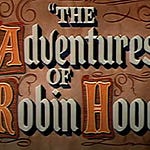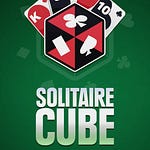Welcome to Equity Breakdown, where you will find short, no bullshit overviews of public companies! Join me from the beginning and lets each develop our investment philosophy that ultimately generates personal growth! Subscribe Now!
“The true currency of life is time…and we have all got a limited stock!” - Robert Harri
To all the Time Investors:
I came across a quote recently from Robert Harris that states, “the true currency of life is time, and we’ve all got a limited stock!”. Now, this is an intuitive concept, but do we really step back and realize the impact and value of time and how that relates to our personal growth. Last week Pomp, wrote about a concept called “Time Billionaires” in his daily newsletter that was referenced from an episode with Tim Ferris and Graham Duncan, the co-founder of East Rock Capital. Here is a quick excerpt below:
Graham Duncan: I was listening to a guy introduced a speaker a while ago. And he was saying people don’t really understand the difference between billionaires and millionaires. He said a million seconds is like 11 days. A billion seconds is 31 years. And I was thinking of time billionaires that when I see, sometimes, 20-year-olds – the thought I had was they probably have two billion seconds left. But they aren’t relating to themselves as time billionaires…What’s startling about the picture – again, to this question of how long a billion seconds is – is how short it is.
This concept is profound, and it inspired me to think about what I would like Equity Breakdown to evolve into as we build a repository of knowledge in the community of modern investors focused on disruptive industries. Moving forward, I would like for all of us to consider ourselves not just value investors, trend investors, growth investors, or contrarian investors, but more importantly Time Investors.
Now, let us define a Time Investor?
A Time Investor focuses on using the true currency, time, to build fundamental long-term wealth. As a Time Investor, you invest in society by finding wonderful companies in disruptive industries and then use the currency of life, time, to deliver strong returns. A Time Investor needs to maintain five key important principles:
Always have an owners’ mindset
Have an open mind with an independent point of view and always be willing to change, refine, or re-design with important and new information
Understand the most valuable currency of life, time, and build a relationship with it knowing full-fledge you are investing for decades
Poses composure and stronger risk tolerance because of the strong level of honest competency
Have the courage to act big when you experience a painful feeling of being right
The logic is simple and clear, but very difficult to maintain. This leads us to one key question:
What investment framework should a Time Investor deploy to achieve returns?
To equip Time Investors in the game that will be played, I am adopting an investing framework that will be centered on one key term, strategic resources. Professor Baruch Lev from NYU Stern sets the stage by defining the three core qualities highlighted below that makeup strategic resources in his book, “The End of Accounting and the Path Forward for Investors and Managers”.
Strategic Resources provide value, rarity, and are difficult to imitate:
Valuable: Assets create a stream of benefits, exceeding costs, such as patents for profitable products and services.
Rare: Assets are limited like the Mountain Pass rare earth mining center in North America.
Difficult to imitate: Assets can not be replicated easily and require significant resources to be acquired or imitated by competitors.
As outlined in the theory of the firm, the purpose of the existence of a company is to maximize sustained economic profits. To maximize profits, the company needs to achieve sustained competitive advantages. To achieve sustained competitive advantages, the company needs to efficiently operate its strategic resources.
Our investment philosophy, which is investing in society, will be like a mosaic where we will focus on growth, value investing attributes, and more importantly strategic resources. This will support our ability to identify and break down long-term investment opportunities that we believe will have the strategic resources to lead and dominate in disruptive industries. The approach will be an “inside-out process” that will map a visual framework of what these resources are, how they are deployed, and what value they generate for the company.
The Strategic Resource Breakdown Investment framework will focus on providing Time Investors with five key attributes:
An inventory of strategic assets, characteristics, and value in their industry. Examples of these will be patents, brands, landing rights, disruptive technologies like mass-producing 3D printing systems, or proprietary algorithms. To generate value an organization must build an organization around its strategic assets.
A map that links strategic resources and companies’ investments. We will build information that focuses on R&D expense and SG&A expense to understand the company’s investments in developing new technologies, acquisitions, employee development, or internal infrastructure team development. Whether a company fundamentally develops its technology or acquires it, the map will give us an idea of how much benefit will be generated, how quickly, and the risk level.
Identify the strategies management is taking to mitigate risks associated with strategic assets. Certain risks can be caused by disruptive technologies, regulation, management shifts, and infringement. An organization that becomes complacent because they currently have strategic assets is at risk of losing the game of wealth. The pace of disruption has accelerated and thus strategies that protect these resources are critical.
Track the company’s value by outlining how the strategic resources are deployed. Rather than focus our efforts on revenue and earnings which simply reflect what has already happened, we will build knowledge on what path was taken to create these outcomes. Ultimately, this is the best part of the recipe because it will truly give us a picture of whether management’s strategies are continuous or short term. As a pricing expert, I have seen how my organization gets excited when they increase profits by simply increasing prices. Unfortunately, that is not the right way to play the game of wealth when understanding the benefits of time.
Quantify the managers’ actions in creating, preserving, and deploying strategic resources. An effective management team needs to manage the entire chain of developing, protecting, and deploying strategic resources. They need to exhibit skills in competitive strategy. Professor Baruch Lev argues that today's company’s reporting does not provide an investor benefit by expensing R&D, or major strategic investments and ignoring the value of changes in strategic resources over time. As a result, a specific cashflow formula highlighted below will remove that ambiguity and quantify a company’s actions indicating systematic value creation by the company.
Residual Cashflow indicator:
Cash Flow from Operations +
Cash Flows from investments in strategic resources (R&D, Brands) –
Cash Flow capital expenditure (average over 3-5 years) –
Cost of Equity of Capital =
The value created by the management team to develop, protect, and deploy strategic resources
*Professor Baruch Lev and his research team have shown that this “lemonade stand” profit concept, beats the earnings bottom line and yields the highest returns.
For a visual framework please see below the proposed investment framework that we will apply to companies that indicate sustainable growth, growing residual cashflow, effective management team and a strong portfolio of strategic resources.
The Strategic Resource Breakdown will be applied across disruptive industries to identify common attributes across assets and then extrapolated to the companies that satisfy a strategic resource scoring system built on the data collected within each industry.
Cathie Wood for Ark Invest, clearly supports that humanity is experiencing the largest technological transformation in history across many sectors concentrated in blockchain technology, healthcare, robotics, energy storage, and artificial intelligence. The era is being compared to that of a century ago when the combustion engine, electrification, and communication technology of the telephone swept through the economy. Comrade Lenin put it best, “there are decades where nothing happens, and there are weeks where decades happen.”
The investment framework proposed will breakdown the true narratives of companies in disruptive industries and allows us to make decisions on a company’s potential role in the future.
Equity Breakdown will deliver for Time Investors no bullshit overviews and ultimately reveal the critical assets of companies through deep research in simple, short, and digestible forms.
Get ready guys, you are about to see from the beginning what it takes to transform from Level 1: Apprentice to Level 4: Master, in a very non-traditional way!
-Igli
You can access and download the detailed report which will include the summary for your records.
If you like the content please make sure to share this newsletter, share this post, or subscribe (if you have not already)!
Additional resources for all the Time Investors (Leeeetttsss Gooooooo!!!)
Professor Baruch Lev - The End of Accounting
Pomp Newsletter - “Time Billionaire”
Graham Duncan Blog - “Start a new investment framework”
Ark’s Invest - Investment Process














